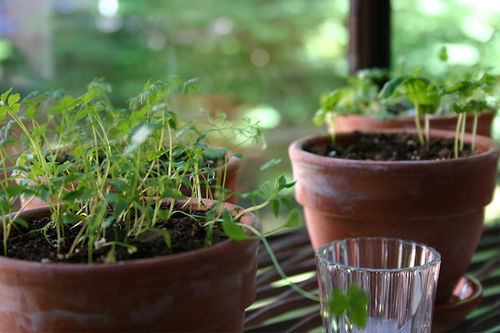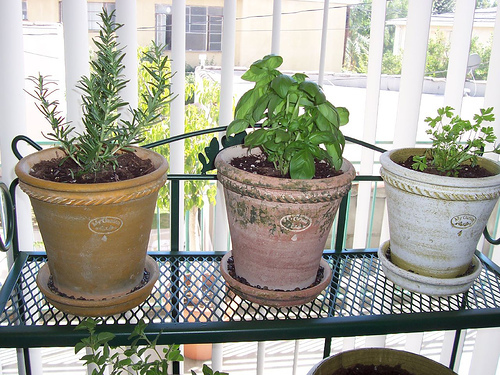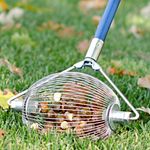How to Grow Herbs Indoors in Winter
Many varieties can double as houseplants if you give them the right conditions

It’s a little sad to watch the summer garden come to an end, but there’s always cold-weather gardening to keep up the gardener’s spirit. Cold-weather gardening techniques show up in different ways.
Some gardeners grow a fall garden outdoors, some plant an eclectic group of flowers and veggies in a heated greenhouse, and others plant an herb garden indoors. Then there are those of us diehards who practice all of the above, determined to feed the plant addiction year-round.
You can grow herbs indoors just like any other houseplant, except these houseplants are going to pull double duty as tasty additions to your winter recipes. You’ll need some sunny windows and an idea of which herbs enjoy what kind of light exposure. I put together a quick rundown for you, although this list is far from exhaustive. Find something you’ve never grown before and experiment. It keeps you young.
The best herbs for a southern exposure
Basil, oregano, parsley, sage, rosemary, tarragon, and thyme are examples of herbs that perform their best in a window with southern exposure. All of these herbs love sun and want about six hours of it every day. Chives often do well with southern exposure too. Because this is the hot window, be sure their soil doesn’t become dry, and you may need to water them more often than herbs in other windows. That said, herbs in general like things on the drier side anyway. The exception I’ve found is chives. I always make sure they’re evenly moist.
Herbs for a window with an eastern or western exposure
Chervil, bay, parsley, thyme, and chives all thrive in a window with eastern or western exposure. These herbs either like the light coming at them with less intensity or, in the case of parsley, tolerate it. This herb station can wait a bit longer for water, but you may have to turn the herbs more often if they start getting leggy while reaching for the sun.

Take herb cuttings to extend the season
Many herbs can be taken as cuttings directly from the plants in your outdoor herb garden. This is certainly true for rosemary, basil, oregano, thyme, and sage. Because the fall is a mild season, it’s prime time for herb cuttings to be acclimated from the outdoor mother plant to their indoor winter vacation home. It’s a simple trick that can be done in about 20 minutes. In fact, you can multitask and plant your indoor cuttings while you’re waiting to wash out your hair color one evening.
You may want to start the cuttings off in a soil-less mix like perlite or vermiculite and then transplant the cutting into true potting soil once some roots have grown. This works quickly because the medium stays evenly moist while the cutting is rooting, so I recommend it. Take a 4-inch cutting off of the mother plant. The lower leaves should be clipped off the cutting, leaving a couple of leaves at the top.
Stick the cutting into the soil-less mix, pressing the mix gently around the cutting, and then water it. Keeping the humidity up around the cutting is another way to get the roots to grow quickly, so you can cover the cutting with a glass jar or clear plastic. If you use the plastic, put a tall stake (a stick or a pencil will do) into the mix to keep the plastic from touching the cutting; you do want air circulation.
Give them the right conditions to ensure success
All herbs appreciate good drainage, so add some sand or vermiculite to their potting soil when you plant them. The best scenario for indoor herbs is if the location where they’re placed stays between 65° and 70°F. This usually isn’t difficult when they’re by the window even when the heater is on inside for us humans. If you can give them temperatures in the 50s during the night, they’ll think they’ve died and gone to heaven. The idea here is to duplicate the outdoors as closely as possible without driving yourself (or anyone around you) crazy.
Indoor herb gardens are a tradition for me. Not only do I enjoy tending to my plants and the fresh flavor, but when winter is at its darkest my herbs are warm ambassadors that remind me that spring will be here once again.

Fine Gardening Recommended Products

Berry & Bird Rabbiting Spade, Trenching Shovel
Fine Gardening receives a commission for items purchased through links on this site, including Amazon Associates and other affiliate advertising programs.

Medium Nut Wizard 14" for English Walnuts, Chestnuts, Golf Balls
Fine Gardening receives a commission for items purchased through links on this site, including Amazon Associates and other affiliate advertising programs.

The New Organic Grower, 3rd Edition: A Master's Manual of Tools and Techniques for the Home and Market Gardener, 30th Anniversary Edition
Fine Gardening receives a commission for items purchased through links on this site, including Amazon Associates and other affiliate advertising programs.







Comments
Log in or create an account to post a comment.
Sign up Log in